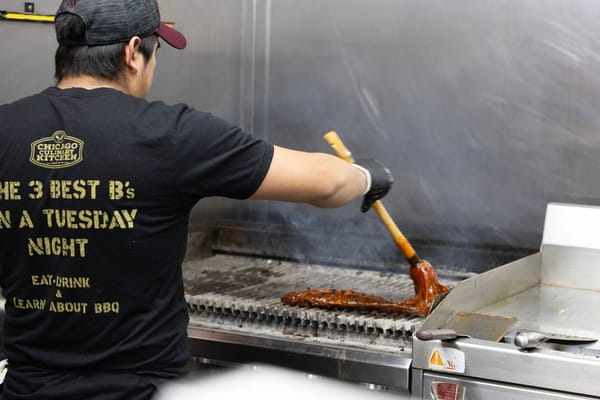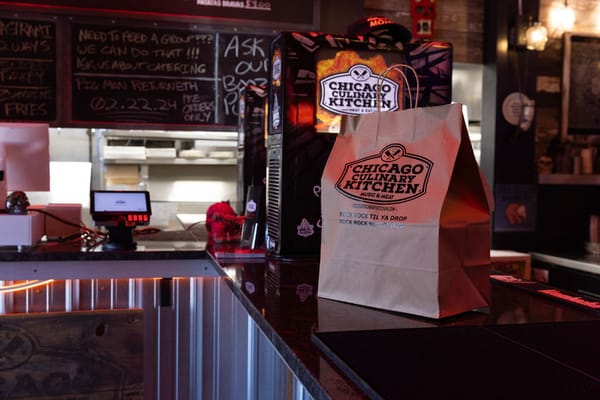Over the last two years, businesses of all sizes have had to adapt to changing regulations to protect their customers' health and safety.
Food businesses in particular have had to figure out how to deliver an enjoyable dining experience that makes patrons feel safe. Though coverage has primarily focused on how restaurants have adapted, food trucks are also dealing with a changing regulatory landscape. Going forward, food truck owners will have to apply the lessons they've learned during the pandemic to better serve their guests and maintain their businesses.
Adapting to changing food truck regulations.
Food truck rules vary widely depending on where you operate. According to the New York State Department of Health as of June 2021, food truck owners had to wear masks and maintain six feet of social distance between employees and patrons. The California Department of Public Health's guidance included frequent cleaning of menus, cash registers, and other non-food-contact surfaces, as well as hard surfaces used for food prep. The state also suggested food truck owners limit the number of people in line. In Michigan, the Restaurant & Lodging Association mandated that all food businesses had to ensure employees had proper personal protective equipment, such as masks and gloves, access to handwashing stations, and hand sanitizer.
In addition to state and local food truck regulations, some federal agencies and industry associations also issued their own guidance to help food truck owners better navigate an evolving public health crisis. The Occupational Safety and Health Administration's (OSHA's) Guidance for Food Truck Workers included social distancing, wearing face coverings, designating pickup zones for customer orders, using gloves to avoid direct contact with food, and opting for contactless and digital payment options. The American Industrial Hygiene Association (AIHA) also provided guidance on maintaining proper ventilation and humidity levels (between 40–60%) within enclosed trucks, enhanced cleaning and disinfecting procedures and creating a large numbered menu that could be easily read from a distance.
With the array of local and state regulations food trucks now have to deal with, it will be critical for food truck owners to take proper precautions and keep up with the evolving landscape. But where to start?
Best practices for food truck owners.
Follow FDA regulations.
The Food and Drug Administration (FDA) has issued a food safety checklist for reopening that food truck owners can use to adapt their operations. The guidance is also useful for businesses that have already reopened or that never closed. It includes suggestions such as opening windows and doors to increase outdoor air circulation, removing or frequently cleaning high-touch self-service containers and maintaining a sufficient stock of single-serve, single-use items, like individually wrapped utensils and napkins.
Go contactless.
Food truck owners also should consider implementing contactless payment options such as mobile point-of-sale terminals that provide on-the-go convenience for guests. These options allow employees to easily process payments with minimal contact and give owners access to data and real-time analytics to make better business decisions.
Increase signage.
Many state and local food truck regulations focus on social distancing, which is harder for food trucks to regulate. However, food truck owners can help themselves by using signage to increase guest awareness about social distancing and make diners active participants in maintaining compliance. Along with a poster-size menu to facilitate socially distant ordering, food truck owners should consider putting up signs reminding customers to stay six feet apart or to wear face coverings while in line.
Expand your offerings.
According to The Boston Globe, some food trucks pivoted to offering frozen meals that guests could reheat and eat later, while others began to provide neighborhood service and direct delivery. Creating an online ordering experience was another innovation reported by The New York Times. Ultimately, every food truck owner will need to figure out how to adapt in order to make their business sustainable.
Scout new locations.
While parks, farmers' markets, college campuses, and festivals have typically driven business for food trucks, food truck owners should explore other locations to increase foot traffic.
For example, Forbes reports that some food trucks have begun parking outside hospitals to make it easier for healthcare providers to grab a quick bite to eat. Others have driven around neighborhoods to enable neighbors to have a socially distanced meal together on their front lawn or in their backyard. Some essential businesses have allowed food trucks to park in their lots so that essential workers have quick access to delicious and diverse food options during their lunch breaks.
Keeping local food truck regulations and permitting restrictions in mind, food truck owners should explore how they can expand their customer base to new locations.
Setting up food trucks for success.
It's been a challenging time for so many businesses, including food truck owners. Regulations will continue to evolve, and businesses will need to stay nimble to better serve their customers and keep things running smoothly. If there's one silver lining to all of this, it's that small businesses have shown just how resilient they are as they continue to overcome obstacles and do their best to feed people in their communities.











